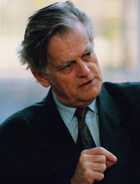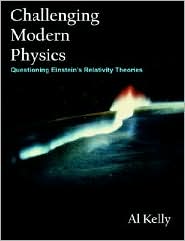Pages: 320
Publisher: Brown Walker Press
Year: 2005
ISBN: 1581124376
ISBN: 978-1581124378
Newton's Laws held for 300 years until Einstein developed the 'special theory of relativity' in 1905. Experiments done since then show anomalies in that theory.
This book starts with a description of the special theory of relativity. It is shown that Einstein was not the first to derive the famous equation E = mc2, which has become synonymous with his name. Next, experimental evidence that cannot be explained by special relativity is given. In the light of this evidence, the two basic postulates of the special theory of relativity on the behaviour of light are shown to be untenable. A new theory (universal relativity) is developed, which conforms to the experimental evidence.
The movement of a conductor near a pole of a magnet and the movement of that pole near the conductor does not always give the same result. It has been claimed that this contradicts relativity theory. Experiments described in this book show that it is not special relativity but another basic law of physics that is contradicted - Faraday's Law.
The Big Bang theory of the beginning of the universe is questioned and an alternative proposed. The source of much of the mysterious missing 'dark matter' that has been sought for decades by astronomers is located. An explanation of the shapes of some galaxies is proffered.
View count: 1
Publisher: The Institution of Engineers of Ireland
Year: 1998
ISBN: 1898012373
View count: 1
Pages: 17
Publisher: The Institution of Engineers of Ireland
Year: 1998
ISBN: 1898012423
Pages: 20
Publisher: The Institution of Engineers of Ireland
Year: 1997
ISBN: 1898012326
ISBN: 978-1898012320
Pages: 18
Publisher: The Institution of Engineers of Ireland
Year: 1996
ISBN: 1898012172
ISBN: 978-1898012177
Download and read it now
Abstract. A number of experiments into the behavior of light gave results which have no satisfactory explanation. These tests proved that light signals, sent in opposite directions around various rotating circuits, including the Earth at any latitude, do not return at the same instant. A new explanation is proposed for these test results. From this, it follows that time and distance are absolute, not relative. A new theory on the behavior of light is developed; this postulates that light, generated upon the Earth, travels with the Earth on its orbital path around the Sun, but does not follow the motion of the Earth as it spins on its axis. The speed of light is thence shown not to be, in all circumstances, independent of the speed of its source. This is substantiated by a vary accurate Michelson & Morley test, which yielded a difference between the East-West and the North-South directions. It is postulated that light, generated upon the Earth, travels with the Earth's gravitational field. The behavior of neutrons and electrons is shown to be similar to that of light.
Pages: 15
Publisher: The Institution of Engineers of Ireland
Year: 1996
ISBN: 1898012229
ISBN: 978-1898012221
Pages: 14
Publisher: The Institution of Engineers of Ireland
Year: 1995
ISBN: 1898012075
ISBN: 978-1898012078
Download and read it now



